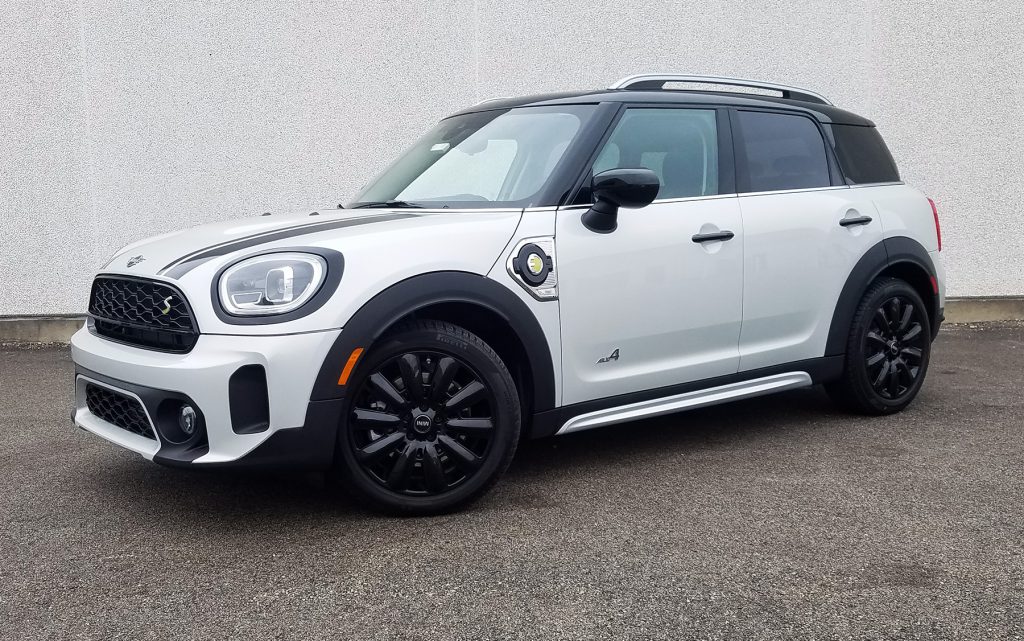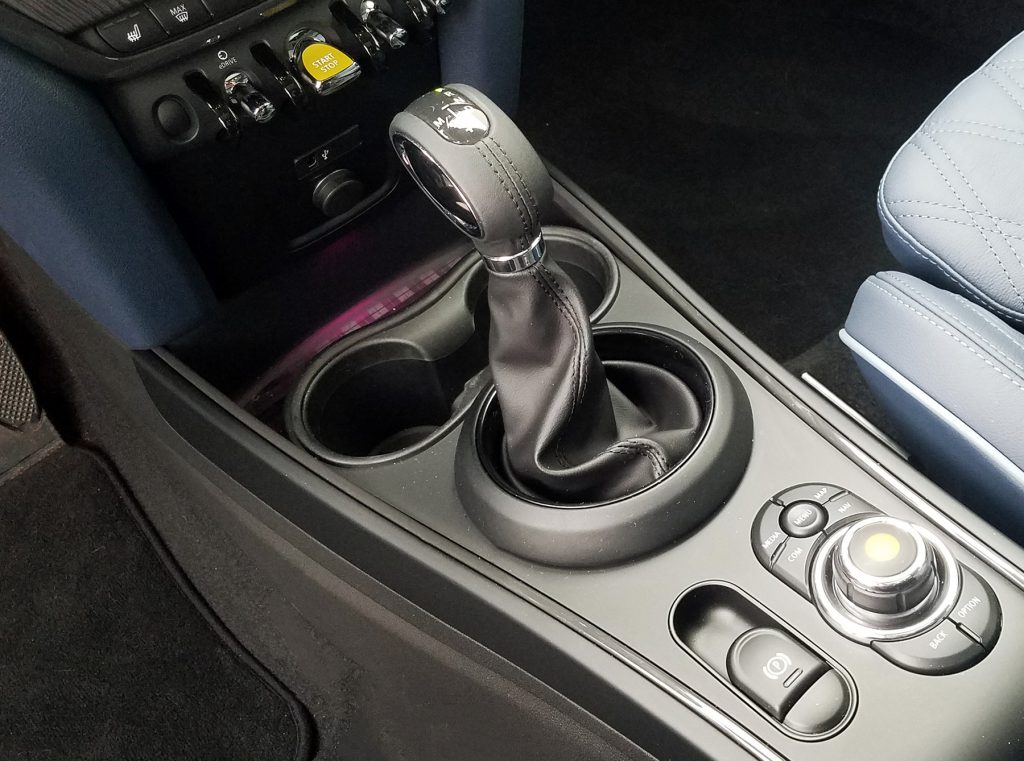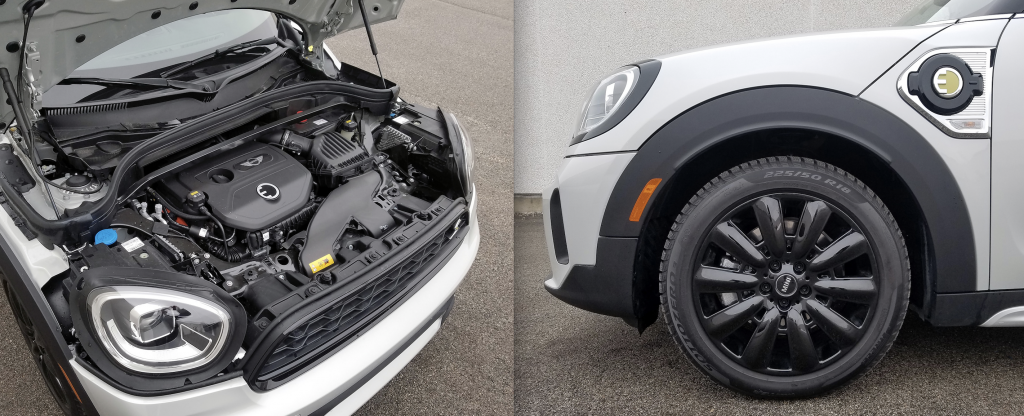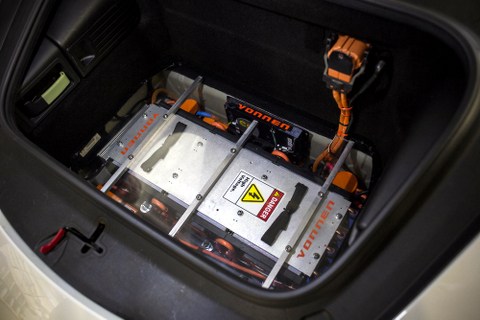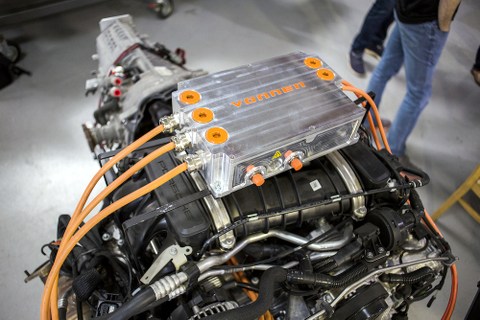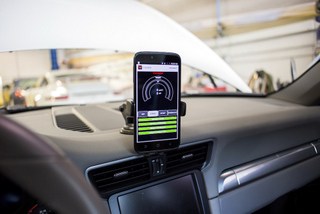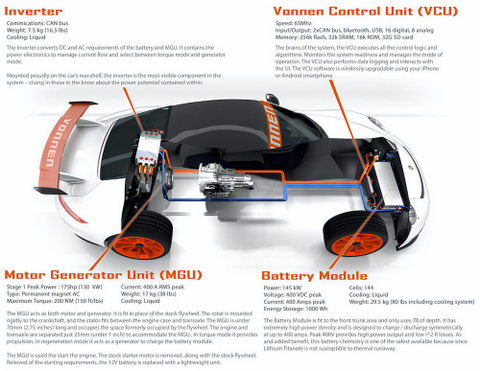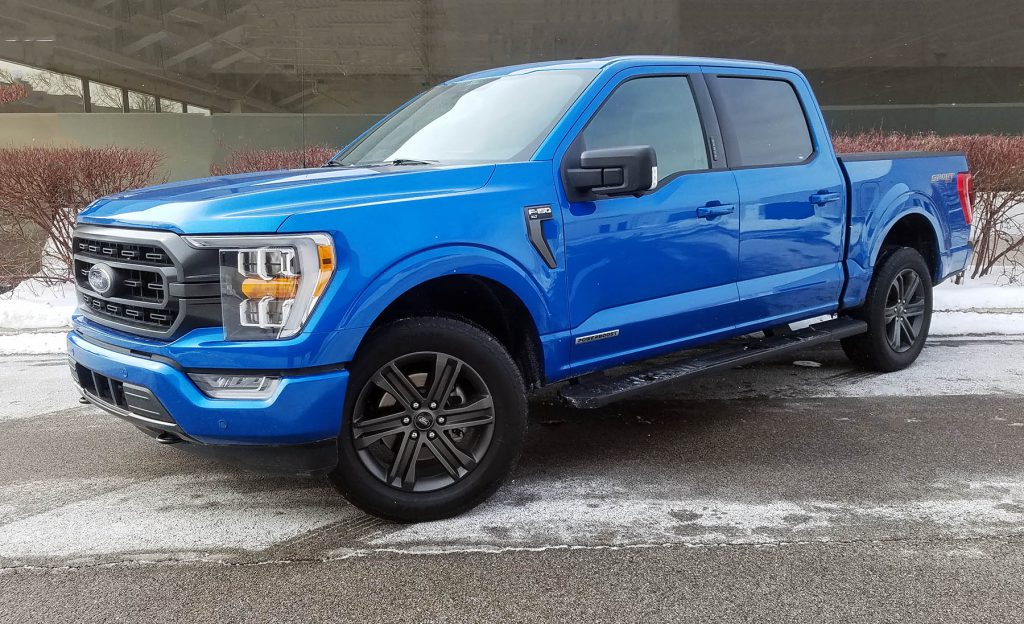
2021 Ford F-150 XLT PowerBoost Hybrid in Velocity Blue
 2021 Ford F-150 XLT 4×4 PowerBoost
2021 Ford F-150 XLT 4×4 PowerBoost
Class: Large Pickup Truck
Miles Driven: 211.7
Fuel Used: 11.2 gallons
Real-world fuel economy: 18.9 mpg
Driving mix: 70% city, 20% highway
EPA-estimated fuel economy: 24/24/24 (city/highway/combined)
Fuel type: Regular gas
| CG Report Card | |
|---|---|
| Room and Comfort | A |
| Power and Performance | B+ |
| Fit and Finish | B |
| Fuel Economy | B+ |
| Value | A- |
| Report-card grades are derived from a consensus of test-driver evaluations. All grades are versus other vehicles in the same class. Value grade is for specific trim level evaluated, and may not reflect Consumer Guide’s impressions of the entire model lineup. | |
| Big & Tall Comfort | |
| Big Guy | A |
| Tall Guy | A |
| Big & Tall comfort ratings are for front seats only. “Big” rating based on male tester weighing approximately 350 pounds, “Tall” rating based on 6’6″-tall male tester. | |
| Drivetrain | |
| Engine Specs | 430-hp 3.5L |
| Engine Type | V6 hybrid |
| Transmission | 10-speed automatic |
| Drive Wheels | 4WD |
Base price: $43,805 (not including $1695 destination charge)
Options on test car: Equipment Group 302A ($5730), 3.5-liter PowerBoost full hybrid powertrain ($4495), 6-foot extended accent running boards ($225), Ford Co-Pilot360 2.0 ($655), twin-panel moonroof ($1495), power-sliding rear window ($350), all-weather rubber and carpet mats ($200), Pro Power OnBoard generator ($750), Interior Work Surface ($165), Trailer Tow Package ($1090), Boxlink ($80), Bang and Olufsen Sound System ($610), partitioned lockable storage ($215), tailgate step ($430), 20-inch 6-spoke dark-alloy wheels ($1395), 360-Degree Camera Package ($796), XLT Sport Appearance Package ($300), wheel-well liner ($180), spray-in bedliner ($595)
Price as tested: $65,256
Quick Hits
The great: Outstanding range of options and innovative new features; high-tech infotainment system; unmatched capability from onboard power generator
The good: Spacious interior; composed road manners
The not so good: Steep option prices drive up the bottom line; doesn’t ride quite as smoothly as Ram 1500 rivals; observed fuel economy fell short of EPA numbers during our cold-weather test
More F-150 price and availability information
John Biel
If you’ve seen the television advertising for the redesigned 2021 Ford F-150, you know it is capable of doing one thing no other vehicle ever mentioned on this blog site could do: help build its own garage.
This is the F-150 with the new hybrid PowerBoost V6 and Pro Power Onboard mobile-generator functionality that can operate power tools—even arc welders, Ford claims. The 2021 F-150 kicks off generation 14 of this solidly popular half-ton pickup. Though every body panel is new, styling is a close-to-the-vest evolution of the design that bowed for 2015 with much-discussed (and debated) aluminum body panels. While the new truck retains aluminum-alloy construction, it rides on an all-new high-strength-steel frame.
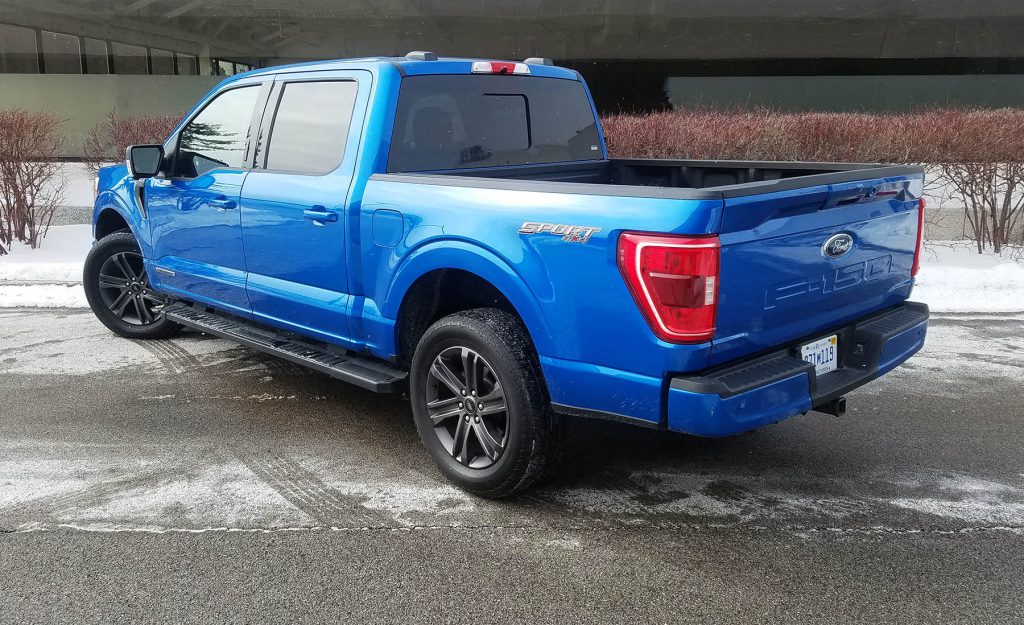
The Ford F-150 is redesigned for 2021. Overall dimensions and passenger/pickup-bed capacities stay about the same as the previous-gen model, but the body panels are all-new and a hybrid powertrain is available for the first time.
Consumer Guide’s XLT test truck was plucked from a lower branch of the F-150 family tree than media-fleet trucks usually occupy—of the six trim levels available, only the XL is more basic. Still, bestowed with a crew-cab body, it was eligible to be ordered with the PowerBoost engine. The powerplant is available in any F-150 with the full four-door cab, at prices that vary with trim level. In this case, it added $4495 to the $45,500 starting price (with delivery) of our 4-wheel-drive Velocity Blue test truck.
5 Cool Things About the Toyota Tundra

The new dashboard is logically arranged, and most controls are easy to use. The lengthy list of high-tech available features includes a full-digital gauge cluster, Active Drive Assist hands-free lane-centering adaptive cruise control system, Active Park Assist 2.0 self-parking system, and over-the-air updates for the infotainment system.
With a 33kW electric motor that’s tucked into the well-behaved 10-speed automatic transmission to aid the 3.5-liter twin-turbocharger gas V6, the PowerBoost Full Hybrid (no 48-volt “mild hybrid” for the blue-oval folks, thank you) makes 430 system horsepower and 570 lb-ft of torque, the most of either commodity available from any F-150 engine. Without a load, it hastens the truck along smartly almost all the time, though more than one driver noted an odd dead spot in acceleration right after getting away from full stops. If you have to put it to work, there’s enough oats to tow up to 12,700 pounds with the Max Trailer Tow Package option installed.
Test Drive: 2020 Nissan Titan PRO-4X Crew Cab
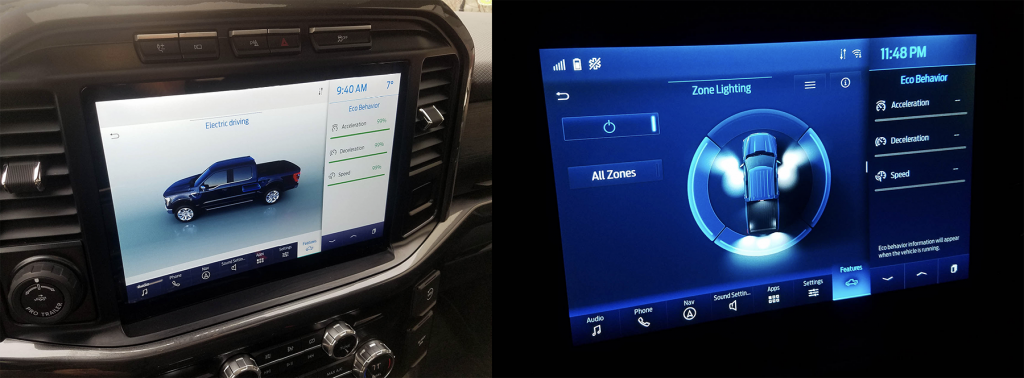
The new Sync 4 infotainment system boasts excellent graphics and is packed with features. Included are a power-delivery display for the hybrid powertrain and a slick graphic control panel for the F-150’s neat Zone Lighting feature.
While the hybrid is the series’ power leader, the next line on its resume is fuel saver. With straight 24s in EPA city/highway/combined estimates for 4-wheel-drive F-150s, the PowerBoost is the mileage leader in city and combined projections compared to the other Ford engines. Indeed, its city figure is 6 mpg better than the rating for the all-gas 3.5-liter EcoBoost engine, and 4 mpg higher for combined operation. Drivers get lots of feedback to help them run efficiently, with things like a trip odometer to track miles driven under electric power and a “braking coach” that reports the percentage of regenerative power sent back into the system at each full stop. This driver posted 19.1 mpg after driving 83.7 miles (20.7 of them electrically) in 58 percent city-type conditions—a disappointing number relative to the EPA estimates, but the frigid weather during our test period likely played a role in bringing our fuel economy down.

The clever Interior Work Surface feature is a $165 option. The shift lever powers down into the console, and the center-console armrest flips out to form a smooth work surface that can be used for signing papers, working on a laptop computer, or what have you. There’s still a traditional center-console bin as well (bottom-right photo).
PowerBoost-equipped trucks automatically come with a 2.4kW version of Pro Power Onboard, accessed through a panel in the left side of the cargo bed. A 2.0kW variant is available with any of the optional gas engines, and the hybrid can be outfitted with a $750 upgrade to 7.2kW that adds two 120-volt plugs and a 240-volt input to the two 120 plugs already provided with the lower-power types. With the benefit of a full tank of gas, the 7.2kW one can do its stuff for up to 32 hours. Pro Power energy levels can be monitored on the truck’s touchscreen or even remotely through the FordPass app.
Quick Spin: 2020 Ram 1500 Rebel EcoDiesel

The XLT trim is one step up from the entry-level XL in the F-150’s model roster, so its cabin ambiance isn’t particularly ritzy. As expected, there’s generous room for big-and-tall adults in the front and rear seats.
That touchscreen is the face of a new standard Sync 4 infotainment system. It comes with a digital owner’s manual with how-to videos, wireless Apple CarPlay and Android Auto smartphone connectivity, and over-the-air software updates. An 8-inch display is standard in the XLT, but the test truck was equipped with a 12-inch screen that was part of the Equipment Group 302A option. The bigger unit has split-screen capability. Happily, Sync 4 remains as easy to understand and use as its predecessor. Regardless of size, the screen fits in a redesigned instrument panel, and there’s a new steering-wheel design.
The cabin is bestowed with big storage spaces throughout, including pockets cut into the sides of the console. CG’s test truck was gifted with the Interior Work Surface option with a panel that flips out from the console to make a level surface handy for mobile office functions. To make room for the platform when it’s in use, the shift lever folds into the center console at the press of a button.
Quick Spin: 2020 GMC Sierra 1500 AT4 Diesel

Since contractors and construction workers often make use of their pickups’ open tailgates as work surfaces, the F-150’s Tailgate Work Surface feature includes handy aids such as integrated ruler markings, pencil holders, and clamp pockets. Check out our photo gallery below for a close-up picture of the Pro Power OnBoard generator’s power-socket panel, which is located in the driver’s side rear of the pickup bed.
In addition to previously mentioned items, XLT standards include fog lamps, a power tailgate lock, 60/40-split fold-up rear bench seat, illuminated entry, tilt-telescoping steering column, trailer sway control, dynamic hitch assist, 4G Wi-Fi hotspot, blind-spot and rear cross-traffic alerts, lane-keeping assist, and front automatic emergency braking. Group 302A added things like automatic dual-zone climate control (in place of manual single-zone air conditioning), satellite radio, and remote starting. The XLT Sport Appearance Package presented body-color bumpers and door handles, chrome exhaust tips, dark-accent grille, and sport-cloth upholstery. With a host of individual options that included such things as 20-inch alloy wheels, a twin-panel moonroof, 360-degree camera, and spray-in bedliner the test truck came to $65,256.
Quick Spin: 2019 Chevrolet Silverado 4-Cylinder

The 3.5-liter PowerBoost full-hybrid V6 powertrain tacks on a hefty $4495 to the bottom line, but it also delivers a muscular 430 hp in addition to its 24-mpg EPA rating. Twenty-inch dark-alloy wheels are a $1395 option.
The redesign has done nothing to adversely affect F-150’s exceptional leg- and headroom in either row. A wide rear seat and flat floor welcome 3-across seating for adults, and doors open wide to make entries and exits easy. Seating position and comfort are very good. We found that finely rippled highway pavement set up a steady vibration through the steering wheel. Otherwise, it rode and drove quite well on expressways and snowy city streets—even with a leaf-spring rear suspension that will make old-timers nostalgic.
Ford appears to have successfully reinvented its perpetual money machine. It can use this one to build its own bank.
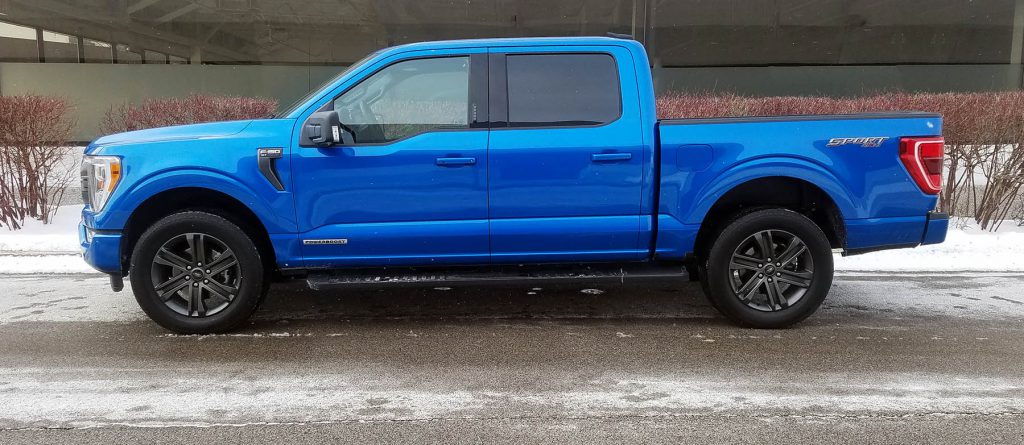
The Ford F-150 has long held the title of America’s best-selling vehicle, and the redesigned-for-2021 model brings an impressive roster of headline-grabbing new features that should help this popular truck retain its sales crown.
Listen to the very entertaining Consumer Guide Car Stuff Podcast
2021 Ford F-150 PowerBoost Hybrid Gallery
(Click below for enlarged images)
For GREAT deals on a new or used Chevrolet check out Express Chevrolet TODAY!
